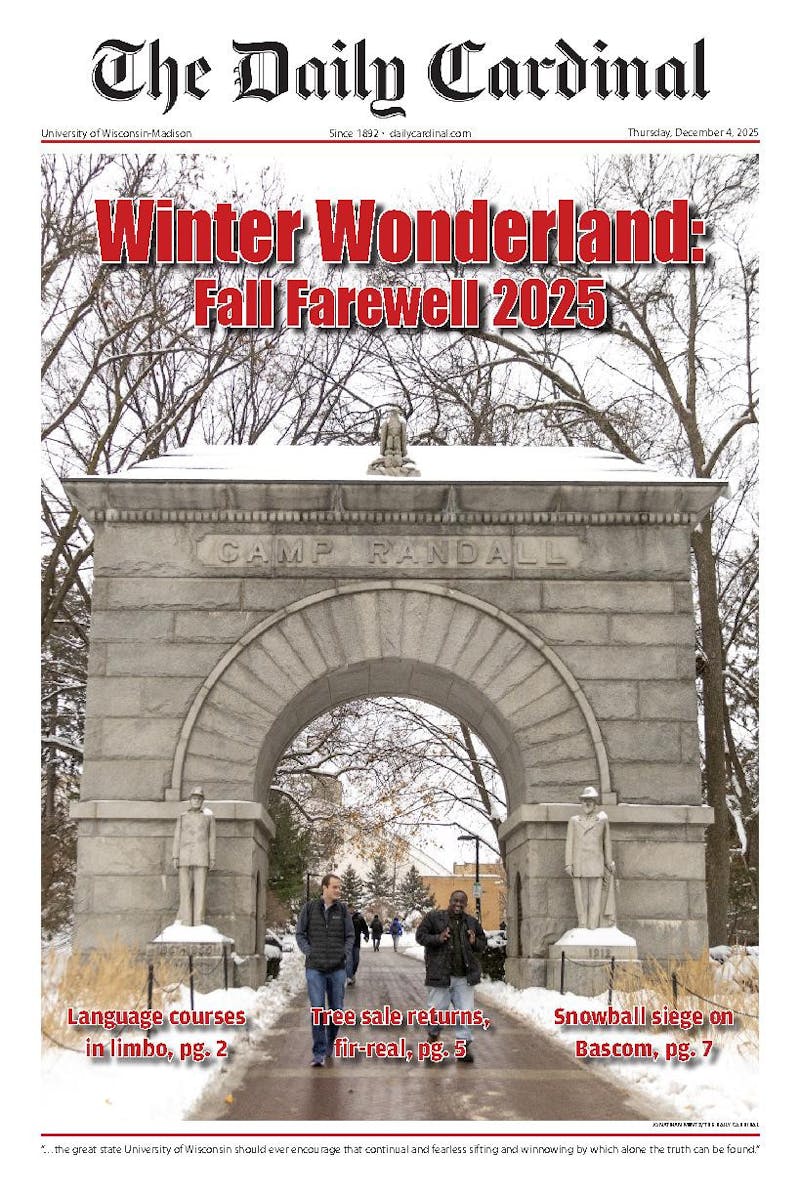With the advent of a new student information Web site earlier this year and the increased enrollment of students in cyber-based courses thoughout the UW System for the fall semester, UW officials are predicting a growing trend of more computer-based modes of education in the future.
UW-Madison officials announced Monday that paper copies of students' grades will no longer be sent home unless there is a specific request or extenuating circumstances. Beginning this semester, students will be able to view and print off an official copy of their grade reports through the My UW-Madison portal.
The My UW site was created earlier this year, first accessible to freshmen during the summer and eventually to all students near the end of fall. Students can access Web mail, campus calendars and personal information such as housing arrangements and tuition issues on the portal.
Some paper copies of grades will still be sent out, according to UW-Madison Registrar Monty Nielsen, if, for example, a student has been placed on academic probation.
""We want to allow the students a way to get their grades in a way that's more convenient to them,"" UW-Madison Assistant Registrar Jim Steele said. ""And another reason is to save money.""
Nielsen estimated $30,000 was spent per school year on grade mailings.
Steele said he and his co-workers were trying to get all paper transactions transferred to electronic procedures in the near future.
In another move toward a technology-based education, UW Learning Innovations, a support unit that partners with UW System institutions that want to take academic programs online, has been aiding different departments to operate solely on a computer-based interaction since October 1997. This fall, enrollment in these ""cyber classes"" has increased by at least 45 percent, said Holly Breitkreutz, associate dean and director for UW Learning Innovations.
Currently, there are 1,400 students throughout the UW System enrolled in such classes, which are more expensive than the traditional on-campus courses, she said. They are usually charged on a per credit basis, ranging from $140 to $300.
Breitkreutz said she thought the use of this kind of Web-based education would be increasing.
""You're still going to have the face-to-face instruction'people want that,"" she said. ""But then you're going to see increased use of technology to enhance face-to-face institutions as the sole mode of instruction.""
She added it was not often a concern that professors and students do not have an in-person interaction in these courses.
""What we find is that the interaction is greater in an online course than in a face-to-face course,"" Breitkreutz said. ""You sit in your faceto-face lectures. How many people does a faculty member speak to in one of those sections? It's just not possible.\





